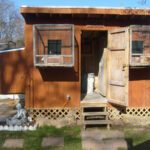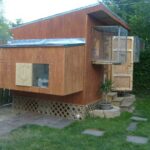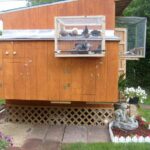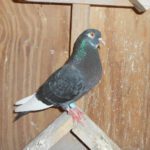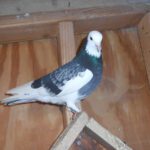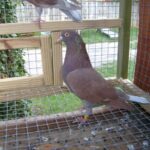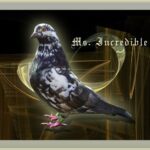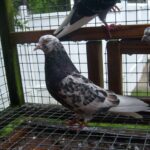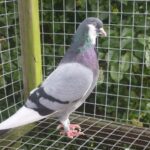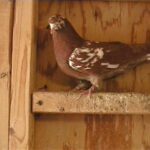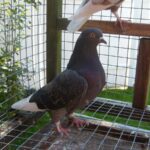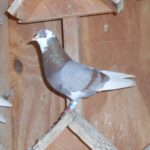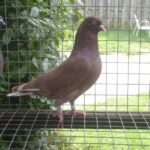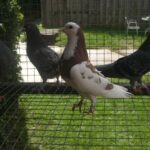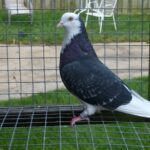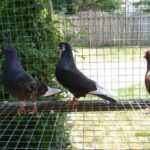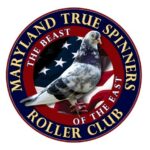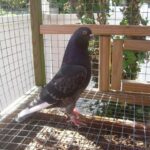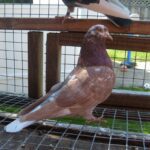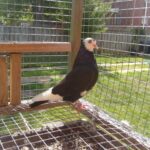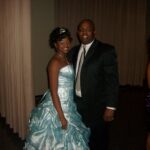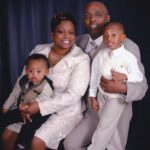The following article and interview appeared on The Roller Pigeon. They kindly shared this information. Visit The Roller Pigeon at http://therollerpigeon.com to see other interviews and informative articles.
Steve Agent
9/23/2015
Steve Agent secret agent spinners
Steve is the fancier you may have heard about from Maryland, USA. Yep, that guy. There are actually several Birmingham Roller fanciers from Maryland, many of which are part of the club Steve co-founded; Maryland True Spinners. They seem to be doing very good out there. An all around great man and positive influence to many and the hobby in general, Steve was kind enough to agree to be the first Featured Fancier on this page and we are grateful to him for that.
Sometimes referred to as ‘Secret Agent Spinners’, he has been working with his current family of rollers for 16 years but has been involved with rollers since he was very young. A red mottle hen banded NBRC 486 2000 has played a huge roll in the development and evolution of his current family and is now considered his foundation hen along with a cock he calls “The Big Unit”. He affirms that the key to having good rollers is selecting them and training them properly.
What is your full name, age range and location?
Steven Agent, 40-60, Maryland, USA.
How many pairs do you typically own and breed from a season?
From 16-20 pairs a season.
How many kits do you usually fly a season?
Three kits.
When did you begin with rollers & why?
As a kid at the age of six. I was introduced to the birds by a cousin by the name of Michael Sims. That’s when the love affair began.
What has influenced you the most?
The sheer love of the Birmingham Roller pigeon. The performance and the pursuit in the ultimate performers.
What is the make up of your birds (what family?)
I have a contingent of birds that goes back to Norm Reed 16 years ago.
Name and describe the one roller that has influenced your family the most or ‘the best’ you have ever owned.
I would have to say a red mottle hen from Norm Reed, band number NBRC 486 2000. She is my foundation hen.
What do you look for in a roller in the AIR when you are looking to stock?
Speed, style, kit placement, frequency and then duration and then depth in that order. Depth is least of my concern because I feel it’s grossly overrated. Most people look at a bird falling a good distance and never consider the former mentioned.
What do you look for in a bird on the GROUND when you are looking to stock?
Short, cobby, apple body, wide chest, but type doesn’t roll. I like the bird that’s doing the best in the air. Every one that’s slim, muscular build, at 6’9″ cannot play basketball.
If you had to choose, what color/pattern would you prefer: blue check self, blue check WF, blue check badge, blue check grizzle, blue check bald, blue check bronze, recessive red self
Blue check badge
How does color and the colors in the background of the roller (parents, grandparents, etc.) affect their abilities to perform?
I am very basic when it comes to color. My birds a predominantly blue (check, bars, w/f, spread, grizzled and bald heads), ash reds (check, bars, spread, w/f and bald heads) and recessive reds (mottles, self and w/f’s). There is a little dilute floating around, but not much. I am a firm believer in hard and soft colors or feathers. I consider only the blue series birds as hard feathers and all else soft. In my experience, I found that the blue birds are the faster spinners whereas the soft colors were more frequent. In an attempt to balance them out, I breed hard to soft and thus far it has worked out great for me and my family of birds.
What do you think the most important quality of a roller is?
To be able to reproduce itself or better.
Is there a motto that you use or keep in mind that influences the way you breed / fly?
They can always get better.
What has been the most disappointing thing that has happened while in the hobby?
As a kid, getting my birds stolen. At this stage of the game, the BOP’s.
List the top 3 items that would automatically categorize a roller as a ‘cull’?
Not rolling
Not kitting
Rolling down or crashing
Do you compete either locally, nationally, globally?
Yes, all.
If you do complete, share your process or a few tips in getting your kit ready for the fly day?
I feed my birds a premix feed that has 11% protein it. Eight days before the fly I reduce the feed by 50%. The amount of feed stay that low for 5 days. Meanwhile I continue to fly them. By the fifth day they will only fly for about 15 minutes, but work at a very high rate. When they come in on the fifth day I give them the full amount of feed again. The sixth day they will probably fly about 17 minutes and still work very hard and again they get full rations again. The 7th day I rest them and give full rations again. On fly day they get up work just as they did on the 5th day, but they will fly for about 35 to 45 minutes.
What advice would you give to new fanciers who is main purpose is to breed champion rollers?
Search as many high-level flyers as possible and visit them. Listen to what they say and look for the results in the air. Most pigeon guys are used car salesmen. One can get their mouths to say anything, but can they back it up is the question. Once you are able to find what you are looking for, work with just that family and ask the guy or person you got them from for advice on how to breed and fly them. In other words, don’t buy a Jaguar and ask a Buick guy how to get the best out of your Jaguar.


